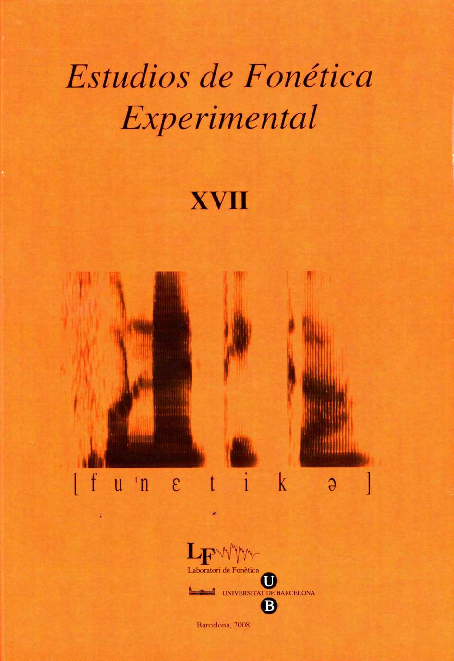Videolaringoestroboscopia: una técnica para visualizar las cuerdas vocales
Keywords:
videostroboscopy, voice disordersAbstract
Classically, the laryngologists have based the study of the voice problems on the indirect examination of the vocal cords by means of a larynx mirror. However, this examination only considers the gross respiratory movements of the vocal folds, i.e., abduction and adduction. To analyze the problems responsible for voice disorders, the small vibratory movements of the vocal cords should be assessed. Nowadays, the stroboscopic examination of the larynx is the best way to analyze the vibratory pattern of the vocal folds during phonation. The vocal folds are illuminated by short light flashes of the same frequency of the vibrations in a synchronic or asynchronic way, in order to visualize the mucosal vibration in slow motion. Laryngeal stroboscopy gives the opportunity to examine every subject at different pitch, intensity, and quality of voice. Several parameters may be assessed, including fundamental frequency, glottic closure, phase and amplitude symmetry, and also the characteristics of the mucosal wave.
The present workshop is primarily aimed to describe the examination methodology used in a clinical otorlaryngology setting. A large number of normal and pathologic examinations will be discussed.
References
ARONSON A. E. (1980): Clinical voice disorders, Nueva York, Thieme-Stratton.
BERKE G. S. y B. R. GERRATT (1993): «Laryngeal biomechanics: an overview of mucosal wave mechanics», Journal of Voice, 7, pp. 123-8.
CERVERA-PAZ, F.; F. VEGA-VAZQUEZ y R. GARCÍA-TAPIA URRUTIA (1996): «Estructura histológica de la cuerda vocal», en I. Cobeta y R. García-Tapia (eds.): Diagnóstico y tratamiento de los trastornos de la voz, Madrid, Editorial Garsi.
COBETA I.; T. RIVERA; C. MARTÍN; A. ESCALANTE; M. BERROCAL y R. PAZ (1990). «Utilidad de la estroboscopia laríngea», Acta Otorrinolaringológica Española, 41, pp. 510-522.
CREVIER BUCHMAN, L.; S. HANS; E. BEHM; V. TISSOT; O. LACCOURREYE y D. BRASNU (2006): «How to perform and analyze a stroboscopic examination?», Annals of Otolaryngology, 123, pp. 203-206.
ELLER R; M. GINSBURG; D. LURIE; Y. HEMAN-ACKAH; K. LYONS y R. SATALOFF (en prensa): Flexible Laryngoscopy: A Comparison of Fiber Optic and Distal Chip Technologies. Part 1: Vocal Fold Masses. J Voice.
FRESNAL-ELBAZ, E. (1997): «Exploración de la fonación», en P. Courtat, C. Peytral y P. Elbaz (eds.): Exploraciones funcionales en otorrinolarin-gología, Barcelona, Jims.
FARNSWORTH, D. W. (1940): High speed motion pictures of human vocal cords, Bell Telephone Laboratories.
GARCÍA-TAPIA URRUTIA, R (1996): «Estroboscopia», en I. Cobeta y R. García-Tapia (eds.): Diagnóstico y tratamiento de los trastornos de la voz, Madrid, Editorial Garsi.
HABEN, C. M.; K. KOST y G. PAPAGIANNIS (2002): «Mucosal wave asymmetries in the clinical voice laboratory», Journal of Otolaryngololy, 31, pp. 275-80.
HIRANO, M. (1981): Clinical examination of voice. Disorders of Human Communication, Nueva York, Springer-Verlag.
KITZING, P (1985): «Stroboscopy: a pertinent laryngological examination», Journal of Otolaryngololy, 14, pp. 151-157.
SMITH, S (1954): «Remarks on the physiology of the vibrations of the vocal cords», Folia Phoniatrica, 6, pp. 66-78.
Downloads
Published
How to Cite
Issue
Section
License

This work is licensed under a Creative Commons Attribution-NonCommercial-NoDerivatives 4.0 International License.
All articles published online by Estudios de Fonética Experimental are licensed under Creative Commons Attribution-NonCommercial-NoDerivs 4.0 International (CC BY-NC-ND 4.0 DEED), unless otherwise noted. Estudios de Fonética Experimental is an open access journal. Estudios de Fonética Experimental is hosted by RCUB (Revistes Científiques de la Universitat de Barcelona), powered by Open Journal Systems (OJS) software. The copyright is not transferred to the journal: authors hold the copyright and publishing rights without restrictions. The author is free to use and distribute pre and post-prints versions of his/her article. However, preprint versions are regarded as a work-in-progress version used as internal communication with the authors, and we prefer to share postprint versions.




